Genre: Strategy Developer: Atari Games Publisher: Tengen Players: 1-2 Released: 1991
Rampart, a great arcade game ported to the friendly neighborhood Genesis. When I first got a copy of this game, I didn’t know what to expect. I had heard about the arcade game but never played it myself, so the Genesis version would be a new experience. Given it was a medieval warfare game, I figured it couldn’t be too bad.
Starting from the top, Rampart’s visuals are not too shabby, given the game’s 1991 release. Nothing spectacular, but overall it looks nice, though there doesn’t tend to be too much variety in the game’s presentation or color palette. Considering Rampart is a simple strategy game however, dull graphics should be the least of one’s concerns.
Similarly, the sound and music is neither great nor terrible; it’s just as it should be as strategy games go. I find Rampart sounds the best on a Model 1 (High Definition Graphics) Genesis hooked up to a stereo sound amp. The FM sounds great with this method!
Rampart’s gameplay consists of different phases. First you must choose a base. Choosing which one can greatly affect your odds of winning, so decide carefully. Next you are required to place some cannons, and this is pretty straight forward. You should usually place them either closest to the opposing base (or shore) or near your center castle. This is followed by one of the most important parts of Rampart, the combat! This is also rather simple, comparatively speaking. Just move your cursor over to the boats or enemy base walls, and throw everything you’ve got at them. The last, but by no means the least, phase before the cycle loops has you repairing the walls of your fortress. You do so by using a random selection of Tetris-like pieces. Sometimes you get a one or two piece block, other times you get an extremely inconvenient shape that won’t have much use in any broken down wall. If you can’t rebuild your wall in time, you’ll either be given a second chance, or the game is over. These four phases as a whole, outline the basic gameplay of Rampart. Though for completeness, I’m going to express greater detail on the more important phases.
First of all, the repairing phase can be absolutely ridiculous, especially when the battle has waged on for several phase loops already. There can be so many holes in the wall, that the thirty second time limit will seem extremely short and unforgiving. Typically, you will need only one or two piece blocks but usually you will end up with the more complicated ones. You will run into this sort of situation frequently if you have lots of cannons touching the edges of your wall, or if your castle wall meets the edge of the map or shoreline. In this predicament, you could always build an entirely new wall around your existing one, but this can take even longer than repairing the old one, especially when there isn’t much room to work with.
Another strategy, which can also be effective, is to develop a second base shortly after setting up your mandatory first. While managing two bases can be an absolute nightmare sometimes, it does have it’s advantages. Being able to attack from two different sides of the battlefield can throw off the opponent’s focus and will divide the onslaught. Speaking of which, the beginning will always be mind-numbing (but easy) until you get a good number of cannons installed. A battle is always easier to fight when you have more and better firepower. However, when fighting on the coast against a fleet of ships, the enemy will grow in size as your cannon emplacements do, so the challenge curve is always at a constant climb. A plus in many peoples’ eyes, as a matter of fact.
Your position on the battlefield will always weigh in very heavily on your odds of victory. Choosing a base near the water’s edge means more shots can be fired since they will take less time to travel to their target, but it also means the opposing boats have a shorter distance to travel to infiltrate your base. Inversely, camping far away from the coast keeps you safer from the enemy but limits your ability to defend the dry land before the ships start unloading troops. The pros and cons of this dilemma are completely up to you, as neither has a clear advantage over the other.
There are a couple of flaws though. First, Rampart is not very forgiving to new players. This probably stems from its arcade heritage. It doesn’t take very long to understand how Rampart is played, but you need to be experienced in strategy to properly handle the game. Secondly, Rampart is very lean on the features and extras. You only get a string of battles in single-player mode, with very few options or settings to spice the game up with and a two player mode. As good as the game is, it begs to have some nice console exclusives included in the package. Another fault is the result of Rampart’s minimalist visuals and overall squeaky clean interpretation of the game’s setting. The victory scene that depicts your opponent being beheaded gets censored with a red screen just before the guillotine blade severs the head. What a tease…
Overall, Rampart offers some very fast paced and decently fleshed out strategy gameplay for what is essentially just a shallow arcade game on the top. Add to all this the two-player mode and you have a mighty awesome game. I hope this review inspires you to give Rampart a try, for it is a wonderful hidden gem in the Genesis library.
SCORE: 7 out of 10


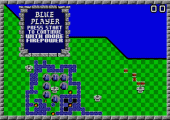
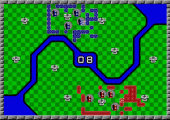
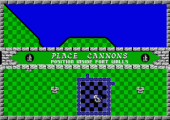
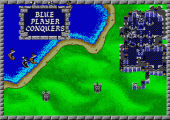
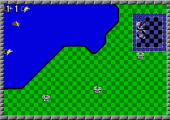
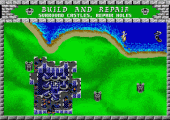
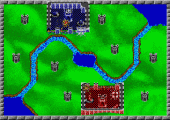
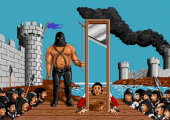
Completely agree with the reviewer. A very tough but fun and underrated game. Give it a try. You wont be disappointed!